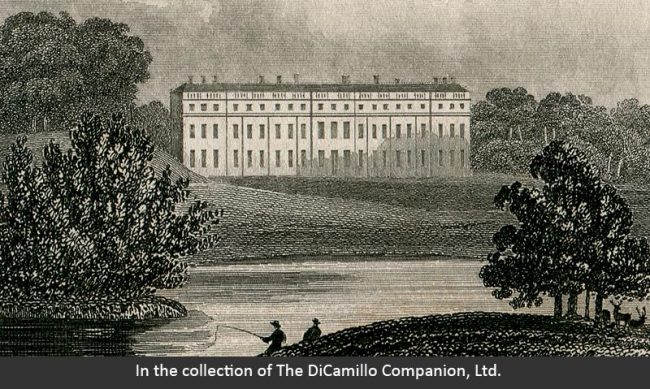
The west facade from "The Curiosities of Great Britain; England and Wales Delineated, Historical, Entertaining and Historical" by Thomas Dugdale, London, circa 1840.
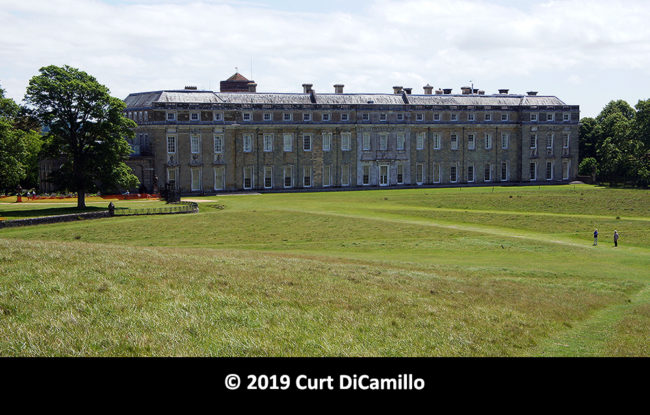
The west facade
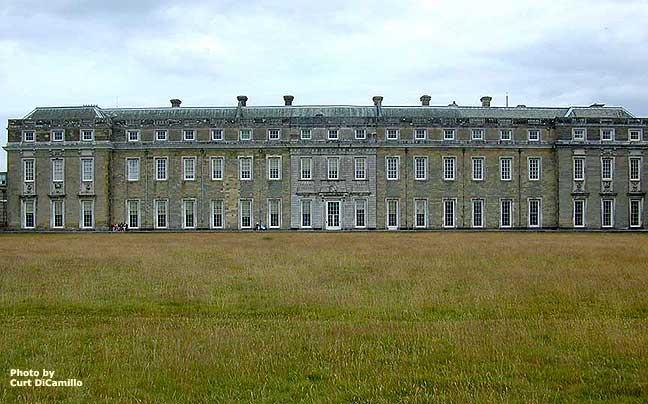
The west facade
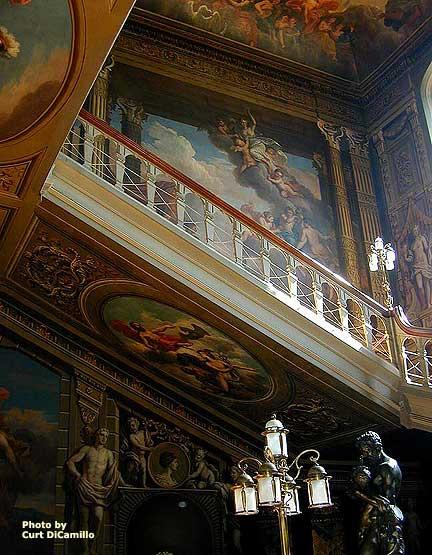
The Grand Staircase
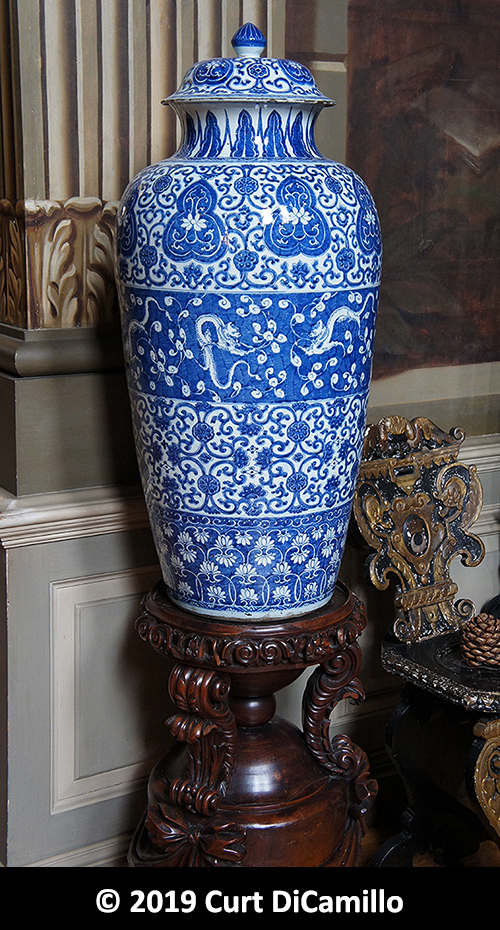
Kang-shi jar
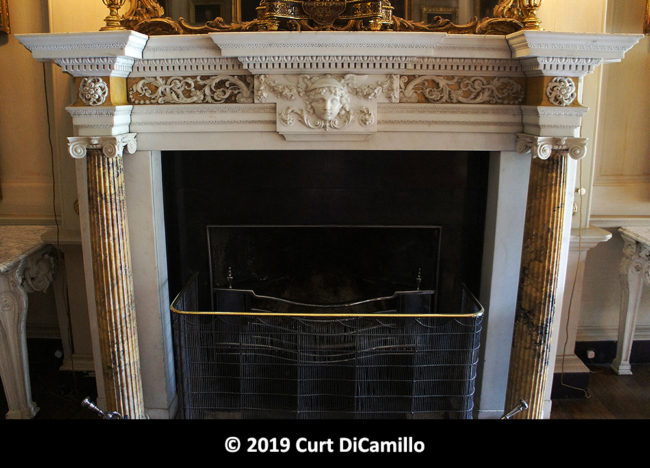
Fireplace in the Square Dining Room
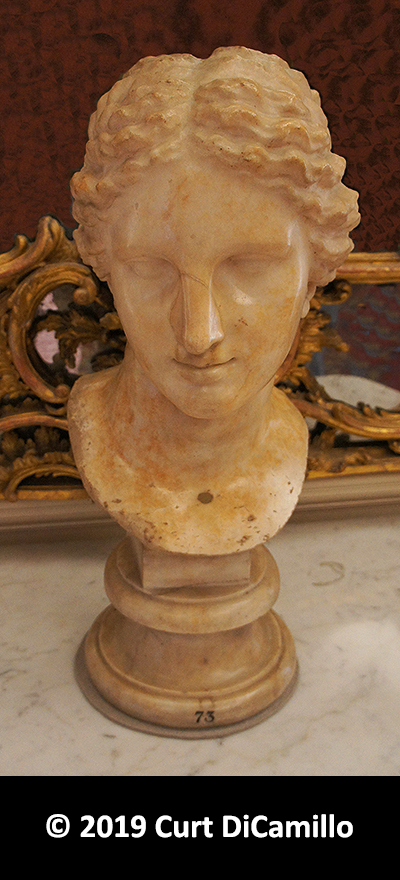
The Leconfield Head (head of Aphrodite), Greek, circa 400 BC-circa 330 BC
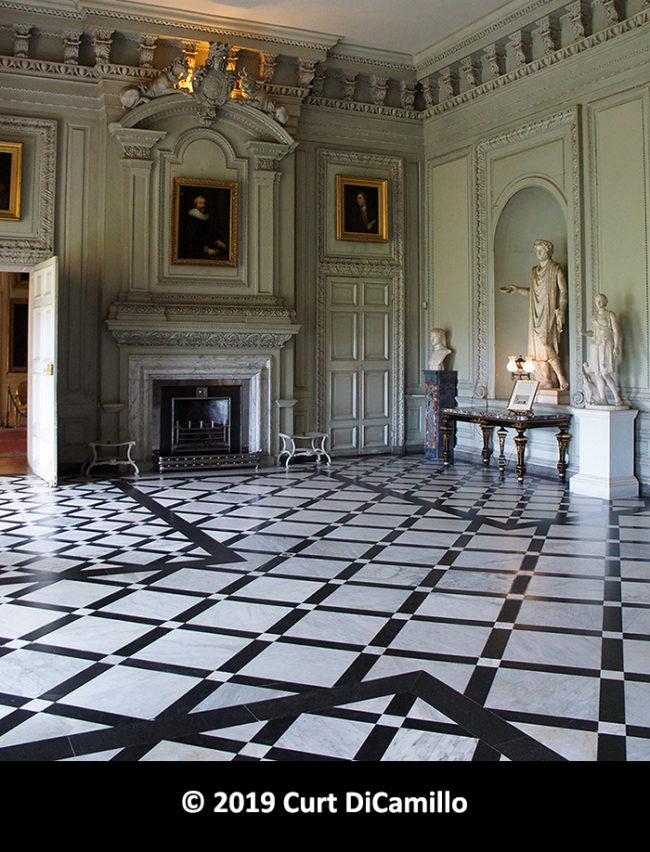
The Marble Hall
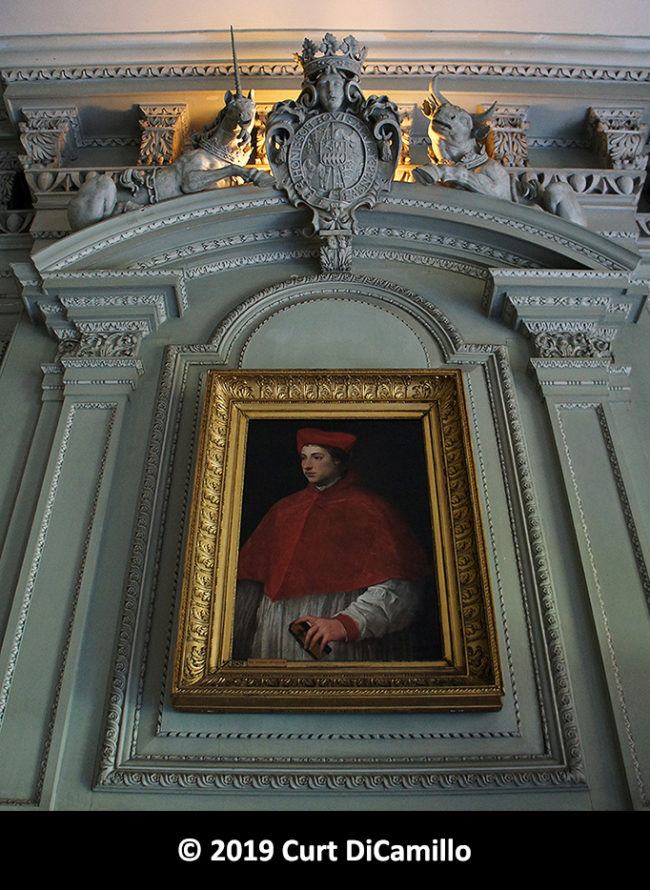
Fireplace in the Marble Hall
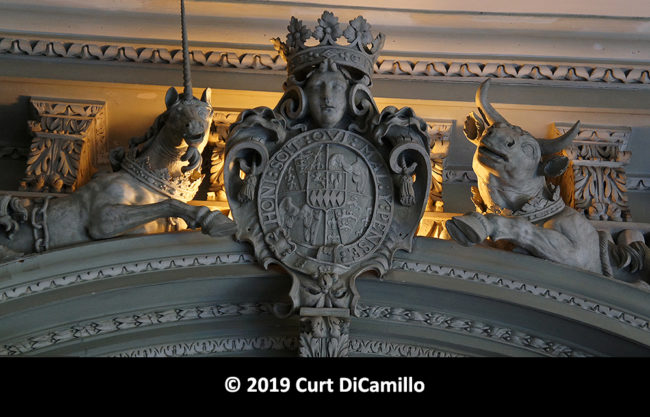
Detail of plasterwork over fireplace in the Marble Hall
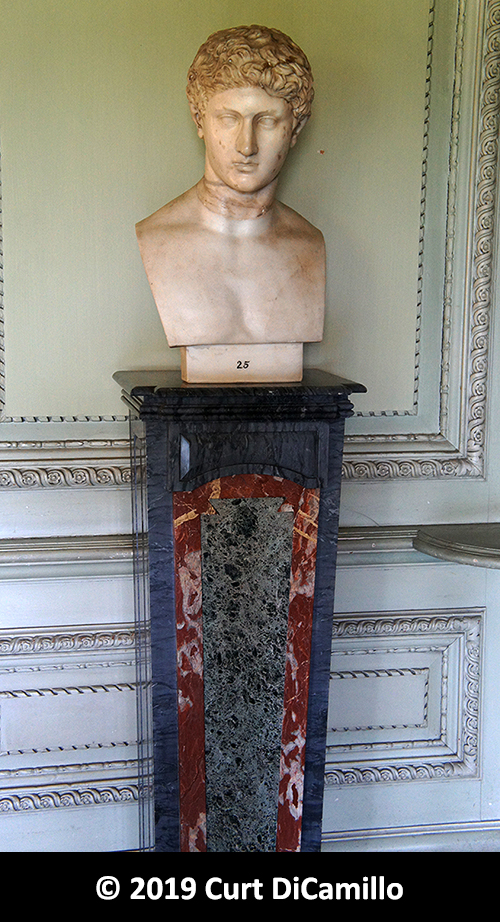
Ancient classical bust in the Marble Hall
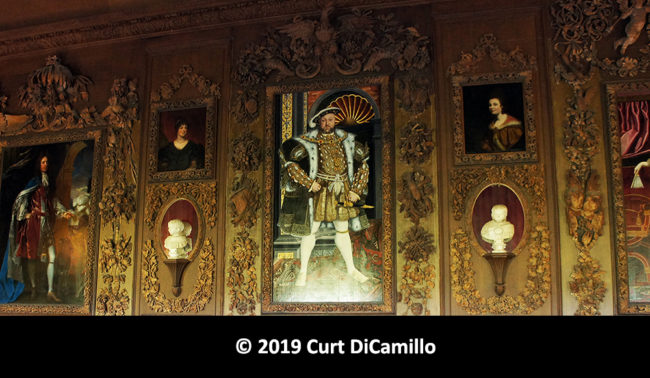
The Carved Room
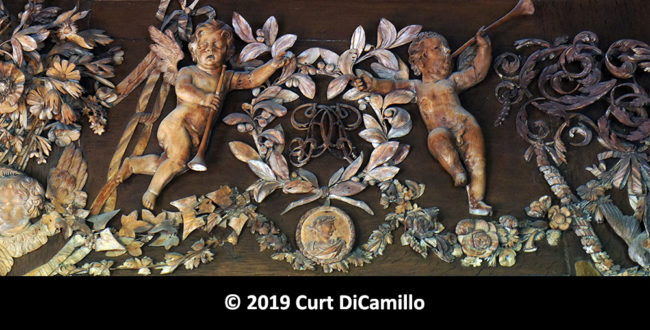
Detail of Grinling Gibbons's carving on the wall of the Carved Room
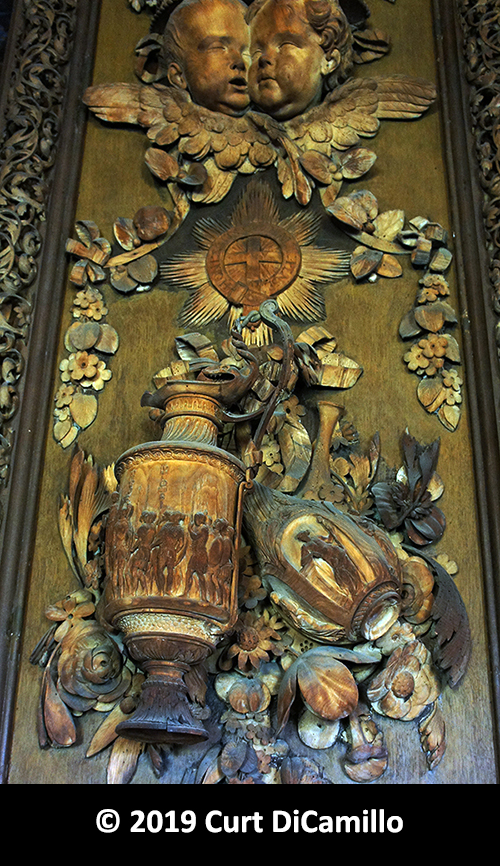
Detail of Grinling Gibbons's carving on the wall of the Carved Room
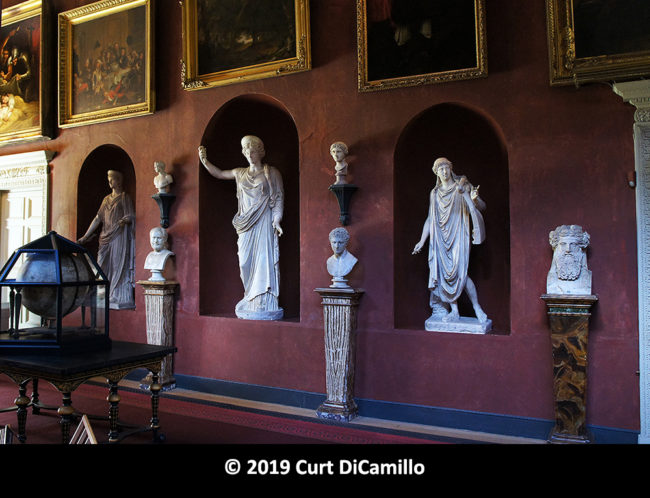
The North Gallery (the Sculpture Gallery)
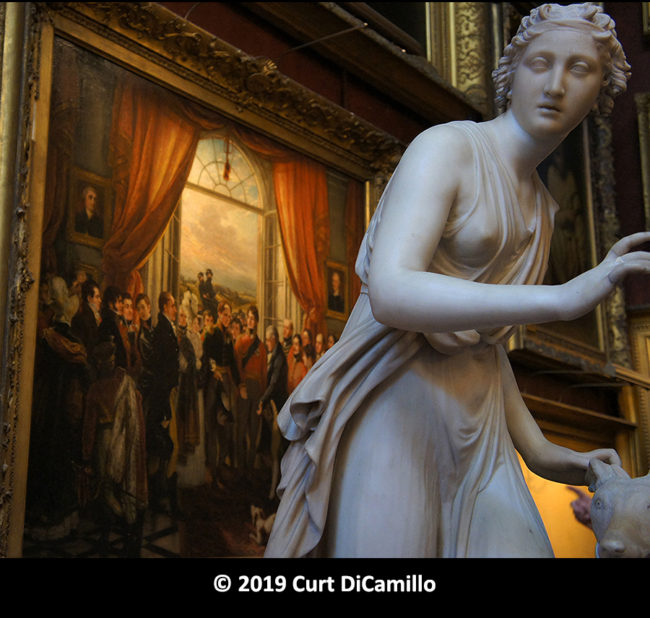
The North Gallery (the Sculpture Gallery)
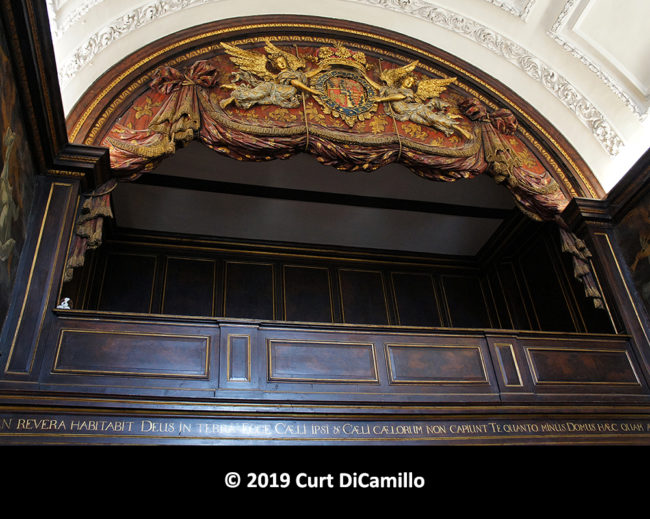
The chapel
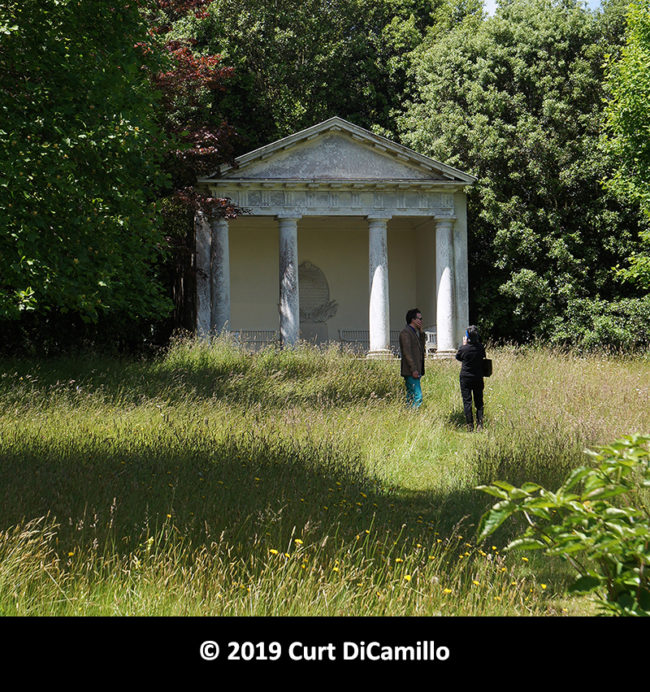
The Doric Temple
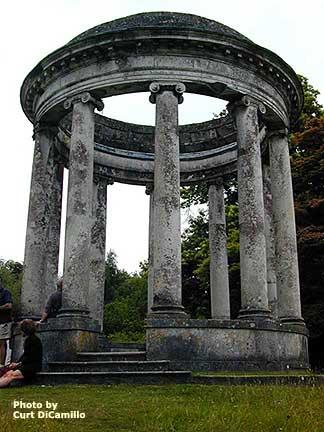
The Rotunda
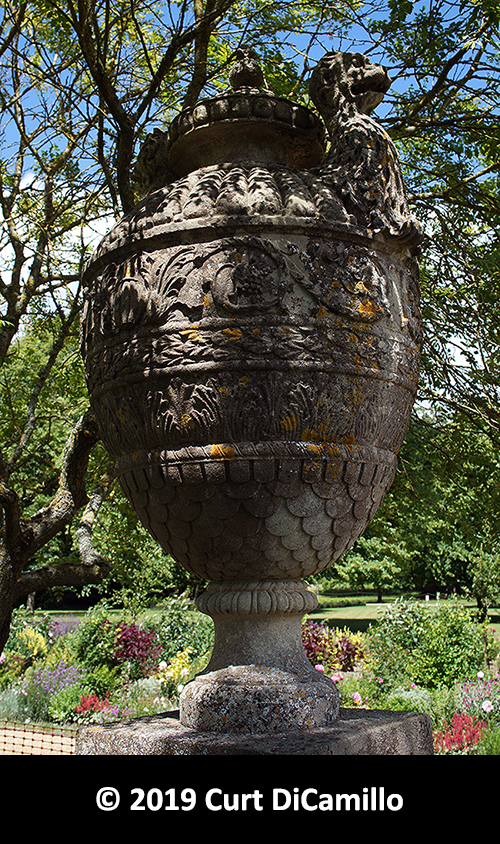
Urn in the garden
Earlier Houses: Several houses have existed on the site, the first of which was erected by the 1st Baron Percy in the 13th century. The current chapel survives from this time.
House & Family History: Considered the most important house in Sussex, Petworth has a long and glorious history. Originally a 13th century house of the Percy family (the 13th century chapel and undercroft survive within the current house), a license to crenellate was granted in 1309 and the existing house was significantly expanded. In the 17th century Petworth was a seat of the earls of Northumberland; the 8th and 9th Earls enlarged the house and built the stable court (demolished). The 9th Earl spent 16 years in the Tower of London under suspicion of complicity in the Gunpowder Plot. He was released in 1621, after paying a fine of £11,000 (approximately £30 million in 2016 inflation-adjusted values using the labour value commodity index) and spent his remaining years at Petworth involved in alchemical and scientific experiments, earning himself the nickname of “The Wizard Earl.” The house as it appears today is primarily the work of Charles Seymour, 6th Duke of Somerset (the Proud Duke). In 1688 he started rebuilding the ancient house of the Percy family that he acquired through his marriage to the daughter and heiress of the 11th and last Earl of Northumberland. The Proud Duke's alterations included the 21-bay west facade, built of Portland stone and the local green sandstone, and the dome (demolished). Petworth is unusual for its time in that it has many French influences, among them the murals painted for the 6th Duke by Louis Laguerre, still an amazing site today. The 6th Duke received the moniker "The Proud Duke" because of his inordinate pride and obsession with his lineage. He is believed to have insisted on his children always standing in his presence; once, when he fell asleep and awoke to find one his daughters seated, he removed her from his will. He was, however, a major benefactor to the University of Cambridge and helped found Cambridge University Press in 1696. In 1703 the 6th Duke hosted Prince George, husband of Queen Anne, and the king of Spain at Petworth. The Proud Duke's Marble Hall is the only 17th century interior to have survived the disastrous fire of 1714 that destroyed most of the center part of the House. The Carved Room (the Grinling Gibbons Room) contains what many believe to be the most technically perfect work ever produced by the artist. A two-year restoration project of the Carved Room was completed by the National Trust in 2004, during which Gibbons's magnificent 1692 carvings were conserved and re-mounted on their oak panels using the original nails. In addition, four landscapes by Turner, commissioned for the Carved Room by the 3rd Earl of Egremont, were returned (they were removed in the 1870s). In 1750 the Estate passed by marriage to the Wyndham family, earls of Egremont. The 3rd Earl of Egremont was, by all accounts, a remarkable man. He was a supreme patron of the arts, kind, humane, and cultured. The painter Benjamin Haydon wrote that "his greatest pleasure was sharing with highest and humblest the luxuries of his vast income. The very animals at Petworth seemed happier than in any other spot on earth." He was generous to his tenants and always provided a helping hand to those in need. Turner was a close friend who spent a great amount of time at Petworth. The 3rd Earl also supported many other contemporary artists, allowing them to live and work at Petworth as his guest. In 1947 the 3rd Lord Leconfield (a descendant of the earls of Egremont) gave the House to the National Trust. It was largely through the efforts of the 6th Lord Leconfield that the nation acquired the immensely important collection of paintings at Petworth in lieu of death duties. John Wyndham, 1st Lord Egremont and 6th Lord Leconfield, was the private secretary and confidant of Harold Macmillan. He served with Macmillan at the Ministry of Supply, the Colonial Office, Allied Headquarters, and the Air Ministry. It has been said that "their friendship and collaboration, that of statesman and private secretary, had no counterpart in modern history." J.M.W. Turner was engaged by Jack Fuller of Brightling Park to capture the East Sussex landscape in drawings and watercolors. It's possible that Turner and Fuller met at Petworth (Fuller knew the 3rd Earl of Egremont through their mutual involvement with the Sussex Yeomanry Cavalry). It's likely that Fuller became involved with Turner because he wanted illustrations for a history of East Sussex he at one time considered writing. This project did not come to fruition; however, between 1810 and 1818 Turner created approximately 13 watercolor landscapes in and around Fuller's estate, Rose Hill (today called Brightling Park). Many of the sketches are in notebooks now in the collection of Tate Britain, London, and can be viewed on their website. Fuller hired a number of Turner's sketches for 100 guineas and had them made into prints. (This information on Jack Fuller by kind permission of Annette Lloyd Thomas).
Collections: Petworth contains the National Trust's finest and largest collection of pictures, with numerous works by Turner, van Dyck, Reynolds, and Blake, as well as ancient and Neoclassical sculpture, and fine furniture. In 1984, the ownership of the 20 Turner paintings at Petworth were transferred from the British Treasury to Tate Britain (in-lieu of inheritance tax), who have placed the paintings on permanent loan to Petworth. In 2002, a Turner exhibition was marked by the book "Turner at Petworth" by David Blayney Brown. The 6th Duke of Somerset (the Proud Duke) engaged Louis Laguerre to paint murals for his enormous Grand Staircase. The Grinling Gibbons Room contains what many believe to be the most technically perfect work ever produced by the artist, carried out in 1692. The Turner Room contains a large collection of Turner's work. Charles Wyndham, 2nd Earl of Egremont, assembled at Petworth, between 1750 and 1760, one of the largest and most important collections of ancient marbles (classical sculpture) in Britain (the collection today also includes Neoclassical work by John Flaxman and John Edward Carew). Possibly the most important marble in the collection is The Leconfield Head (aka The Leconfield Aphrodite), a 4th century BC Greek while marble bust attributed to Praxiteles (see photo in "Images" section). The Leaconfield Head was prominently featured in the first volume of Richard Payne Knight's "Specimens of Ancient Sculpture," published in 1809. The head was almost certainly made for insertion in a full-length statue. It acquired its name from the 3rd Earl of Egremon'ts eldest illegitimate son, who was given the title Baron Leconfield in 1859. Circa 1756-63 the 3rd Earl commissioned Matthew Brettingham to design a gallery to hold his collections. A marble funerary altar of Anthus, circa AD 50-70, formerly at Petworth, is today in the collection of the Museum of Fine Arts, Boston. On March 21, 1979 Paul Storr's dinner service of 1806-07 from Petworth was sold at Christie's for £260,000. The Mitford Collection of Firebacks, lent by Mr. W. Slade Mitford, is on display at Petworth. There is also today in the collection at Petworth a terrestrial globe by Emery Molyneux, believed to the only one in the world in its original 1592 state.
Comments: "As I lay in my magnificent bed, and saw the old portraits trembling in a sort of twilight, I almost fancied I heard them breathe, and almost expected they would move out and shake my curtains." -Benjamin Haydon (1786-1846) on Petworth.
Garden & Outbuildings: The Elizabethan gardens were probably laid out circa 1575 by the 9th (Wizard) Earl of Northumberland. The 6th Duke of Somerset employed George London to create formal Baroque gardens around the house. Capability Brown landscaped the 700-acre park for the 2nd Earl of Egremont in 1752. The 30-acre pleasure grounds have remained virtually unchanged since the time of Capability Brown and contain a Roman Doric Temple and the Rotunda. Matthew Brettingham the Elder designed the lodge adjoining the gates and designed the facade for the existing Elizabethan stables. Petworth has had real tennis courts since the 16th century; the present court was laid out in 1872 and is one of the last remaining courts in the country attached to a country house. Real tennis is still played here by the Petworth House Real Tennis Club. The huge Elizabethan stable court was begun by the 8th Earl of Northumberland; the building was destroyed circa 1725. Charles Robert Ayers designed a Gothic style folly in 1828 that is extant. The park is inhabited by the largest herd of fallow deer in England. Leconfield Estates continue to own much of village of Petworth and the surrounding farmland.
Chapel & Church: The chapel is the only complete room to survive from the earlier Percy manor. With the exception of the lectern, the furnishings are exclusively from the period 1685-92 and were commissioned by the Proud (6th) Duke of Somerset. In 1999 the chapel re-opened to the public, after having been closed for three years for a £1 million restoration. During the restoration evidence was uncovered of the Medieval house, which had been covered up during the building work of the 1680s. In 1827 Charles Barry rebuilt the tower of the church, added a spire, and altered the nave.
Architect: Lancelot Brown
Date: 1752Architect: George London
Date: 1688-93Architect: Matthew Brettingham the Elder
Date: 1756-63Architect: Matthew Brettingham the Younger
Date: 1774-79Architect: Charles Barry Sr.
Date: 1827Architect: Anthony Salvin
Date: 1869-72John Preston (J.P.) Neale, published under the title of Views of the Seats of Noblemen and Gentlemen in England, Wales, Scotland, and Ireland, among other titles: Vol. IV, 1821.
Country Life: XXII, 826, 1907. LVIII, 818, 862, 899 [Pictures], 928, 936 [Pictures], 966, 974 [Turner], 1925. LIX, 247 [Furniture], 1926. CI, 422, 1947. CXV, 325 [Treasures], 1954. CLIII, 1870, 1973.
Title: National Geographic (magazine)
Author: NA
Year Published: NA
Reference: Nov 1985, pg. 674
Publisher: Washington, DC: National Geographic Society
ISBN: 00279358
Book Type: Magazine
Title: Treasure Houses of Britain, The - SOFTBACK
Author: Jackson-Stops, Gervase (Editor)
Year Published: 1985
Reference: pg. 302
Publisher: Washington, DC: National Gallery of Art (New Haven: Yale University Press)
ISBN: 0300035530
Book Type: Softback
Title: Buildings of England: Sussex, The
Author: Pevsner, Nikolaus; Nairn, Ian
Year Published: 1973
Reference: pgs. 301-307
Publisher: London: Penguin Books
ISBN: 0140710280
Book Type: Hardback
Title: Movie Locations: A Guide to Britain & Ireland
Author: Adams, Mark
Year Published: 2000
Publisher: London: Boxtree
ISBN: 0752271695
Book Type: Softback
Title: Disintegration of a Heritage: Country Houses and their Collections, 1979-1992, The
Author: Sayer, Michael
Year Published: 1993
Publisher: Norfolk: Michael Russell (Publishing)
ISBN: 0859551970
Book Type: Hardback
Title: Biographical Dictionary of British Architects, 1600-1840, A - SOFTBACK
Author: Colvin, Howard
Year Published: 1995
Publisher: New Haven: Yale University Press
ISBN: 0300072074
Book Type: Softback
Title: Royal Oak Newsletter, The
Author: NA
Year Published: NA
Reference: Spring 1999, pg. 13
Publisher: New York: The Royal Oak Foundation
ISBN: NA
Book Type: Magazine
House Listed: Grade I
Park Listed: Grade I
Current Seat / Home of: John Max Henry Scawen Wyndham, 2nd Baron Egremont & 7th Baron Leconfield.
Past Seat / Home of: Henry de Percy, 14th century; Henry Percy, 4th Earl of Northumberland, 15th century. Charles Seymour, 6th Duke of Somerset, 17th-18th centuries. George O'Brien Wyndham, 3rd Earl of Egremont, 18th-19th centuries; George Wyndham, 1st Baron Leconfield, 1837-69; Edward Scawen Wyndham, 5th Baron Leconfield, 20th century.
Current Ownership Type: The National Trust
Primary Current Ownership Use: Visitor Attraction
Ownership Details: Owned by the National Trust. Most of the contents are owned by the nation, on loan to the Trust. Petworth is also the seat of Lord and Lady Egremont.
House Open to Public: Yes
Phone: 01798-342-207
Fax: 01798-342-963
Email: [email protected]
Website: https://www.nationaltrust.org.uk
Historic Houses Member: No